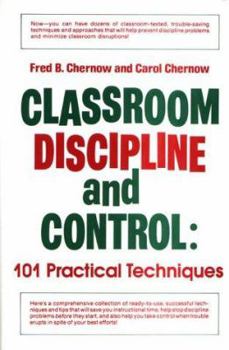Classroom Discipline and Control: 101 Practical Techniques
Shows teachers how to maintain discipline, work with parents, encourage student self-discipline, and prevent classroom problems. This description may be from another edition of this product.
Format:Hardcover
Language:English
ISBN:0131362836
ISBN13:9780131362833
Release Date:January 1981
Publisher:Parker Publishing Company
Length:204 Pages
Weight:1.10 lbs.
Dimensions:0.8" x 6.3" x 9.3"
Customer Reviews
1 rating
101 Practical Classroom Discipline Techniques
Published by Thriftbooks.com User , 16 years ago
One major theme of this book is how the teacher communicates his/her directives. Consider the situation in which the teacher said, a half-hour ago, that there will be no more drinks from the fountain. A boy asks permission for a drink, and, being a good boy, gets it. A girl then asks, and is refused. This adds credence to the suspicion that the teacher favors boys over girls, Not surprisingly, soon the whole class wants drinks. In any case, the children get the message that the teacher doesn't really mean what he/she says. Brief commands are the best. Flicking the light, ringing a bell, etc., is a much better method of getting students' attention than speaking--and certainly better than yelling. There is a helpful list of seven activities (pp. 180-181) that can be used to grab and hold student attention. These can, for instance, be used when a teacher covers another teacher's class. Cooperation within a class may be facilitated by the use of a "secret" code word for cooperation. Children love it. When told, "Let's use a little (code word)", they will be happy to get involved in the activity.






